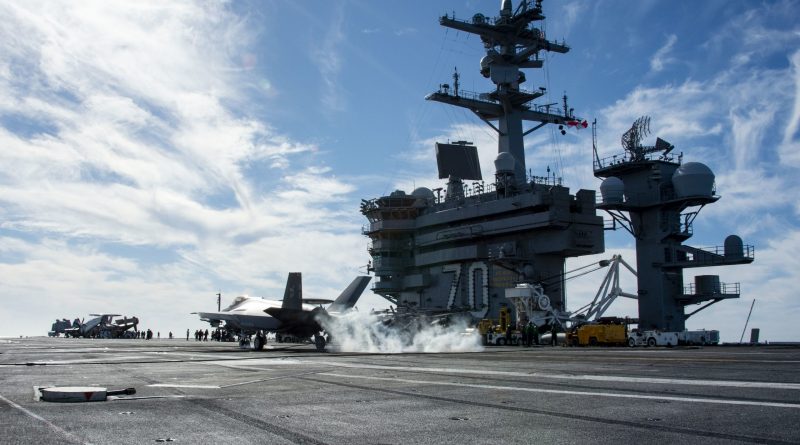Raytheon Technologies completes delivery of 23 Joint Precision Approach and Landing Systems to the U.S. Navy.
Raytheon Technologies delivered all 23 contracted Joint Precision Approach and Landing Systems low-rate production units to the U.S. Navy on time or ahead of schedule.
JPALS is a software-based GPS navigation and precision approach landing system that guides aircraft onto carriers and amphibious assault ships regardless of sea state or weather conditions, bolstering safety and operational capability. It is integrated into the F-35 and was recently sold to the Japan Maritime Self-Defense Force.
“This is a significant milestone for the JPALS team and highlights the incredible efforts of hundreds of our teammates over the past decade who developed and now have fully delivered these critical systems that our Warfighters and International Partners need,” said Capt. Kevin Watkins, the Naval Air Systems Command’s program manager for Naval Air Traffic Management Systems (PMA-213). “This team overcame many barriers over the past several years, successfully achieving the required outcome to deliver all of the capabilities needed, on time and affordable.”
“Since the contract award in 2019, our team has worked closely with Naval Air Systems Command to outfit the fleet’s carriers and ships with JPALS to ensure pilots can land safely and successfully anywhere in the world,” said Mark Maselli, Raytheon Technologies’ JPALS program manager. “Their mission became our mission, and our team committed to ensuring every single system was delivered to the customer on time or ahead of schedule.”
JPALS is deployed on all U.S. Navy aircraft carriers and amphibious assault ships, as well as all F-35 aircraft. In addition, JPALS is deployed on two international platforms: the UK Royal Navy’s HMS Queen Elizabeth, and the ITS Cavour, an Italian aircraft carrier, to support their F-35 squadrons. JPALS will be deployed on the JMSDF’s JS Izumo in 2024.
Raytheon has also developed an expeditionary variant of JPALS called eJPALS, which is a smaller, portable system that could be packaged in ruggedized cases, mounted on small vehicles, and deployed in austere, remote locations for precision landings. The system could establish up to 50 landing points within a 20-nautical-mile radius.

